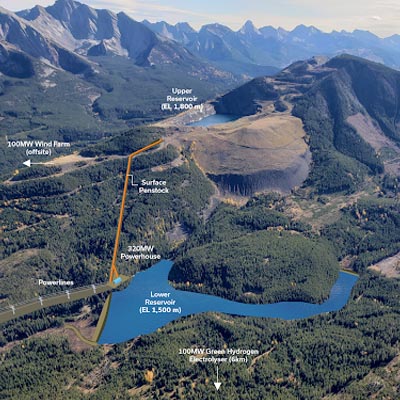Despite challenging market conditions, some B.C. mining projects going ahead
A number of mines are moving closer to the construction stage.

Gavin Dirom, AME BC president. — Photo courtesy of AME BC
Although 2015 was another challenging year for the British Columbia mining sector, some industry watchers think the worst might be over, thanks to a recent increase in gold and silver prices.
That bit of optimistic news comes from the recently released PwC BC Mining Industry Survey for 2015.
“What we saw in 2015 was another tough year of continued downturn in commodity prices, which remain the biggest threat to the industry’s profitability,” said Mark Platt, partner and leader of PwC’s B.C. mining practice, in an announcement. “Still, B.C.’s mining industry is proving resilient. While most mining companies have been cutting spending and curtailing operations to help withstand the current price environment, others are raising money and advancing projects.”
A number of new mines have opened in B.C. in recent years. They include Copper Mountain in 2011, New Gold’s New Afton copper and gold mine in 2012, and Thompson Creek Metals’ Mount Milligan copper and gold mine in 2013.
In addition, Imperial Metal’s Red Chris copper-gold mine began production in early 2015. Red Chris shipped its first load of concentrate in April 2015.
There are also two mines that are fully permitted and now entering the construction phase: Pretium Resources’ Brucejack project [see below] and JDS Silver’s Silvertip project.
A number of mines are moving closer to the construction stage, including Seabridge Gold’s KSM project, New Gold’s Blackwater project, KGHM International’s Ajax project and HD Mining’s Murray River project.
In April 2016, AuRico Metals announced the BC Environmental Assessment Office had screened and accepted for review its Environmental Assessment Certificate application for the Kemess underground project.
The occasional blue skies notwithstanding, the overall conditions in the B.C. mining industry remain overcast with temperatures well below normal.
For example, the PwC survey found aggregate gross mining revenues fell from $8.2 billion in 2014 to $7.7 billion in 2015.
In the same period capital expenditures fell from $1.5 billion to $1.2 billion.
The average U.S. price of key mining commodities produced in B.C. also fell between 2014 and 2015.
According to the PwC report, copper, which is B.C.‘s second-largest commodity by revenues, was hit hard in 2015.
The price of copper averaged US$2.50/lb in 2015, compared to US$3.12/lb in 2014. In early 2011, copper traded at a record of just over US$4.60/lb.
Metallurgical coal prices were hovering around US$84 per tonne in the spring of 2016. The price of metallurgical coal has been on a downward slide since reaching a record of around US$330 per tonne in 2011.
According to the PwC report, 2015 was a particularly difficult year for the junior side of the industry, which relies heavily on investment to explore and develop the mines of the future.
“Last year (2015) was one of the most challenging years mineral explorers have experienced, not just in B.C. but around the world,” said Gavin Dirom, president and CEO of the Association for Mineral Exploration British Columbia. “The downturn has been longer and deeper than most people predicted.”
At the same time, Dirom said, B.C. is home to nearly 60 per cent of the exploration and mining companies listed on the Toronto Stock Exchange and the TSX Venture Exchange, and mineral projects in B.C. continue to attract investment.
“This is important, because it means that B.C. is relatively well positioned to catch the next wave of investment to support more exploration and the discovery of new deposits that can be mined,” he said.
To help ease some of the pain being felt by the mining industry, the B.C. Government announced a five-year electricity power rate deferral program for B.C. mines.
The program allows qualifying operating mines to defer up to three-quarters of their power bills for two years, based on a sliding scale of metal prices.
Copper Mountain Mining and Taseko Mines recently announced they had reached power deferral agreements with the Province.
The 2015 PwC report is based on a survey of 27 participants. They include 14 operating mines, 12 projects in the exploration or development stage and one smelter operation.




